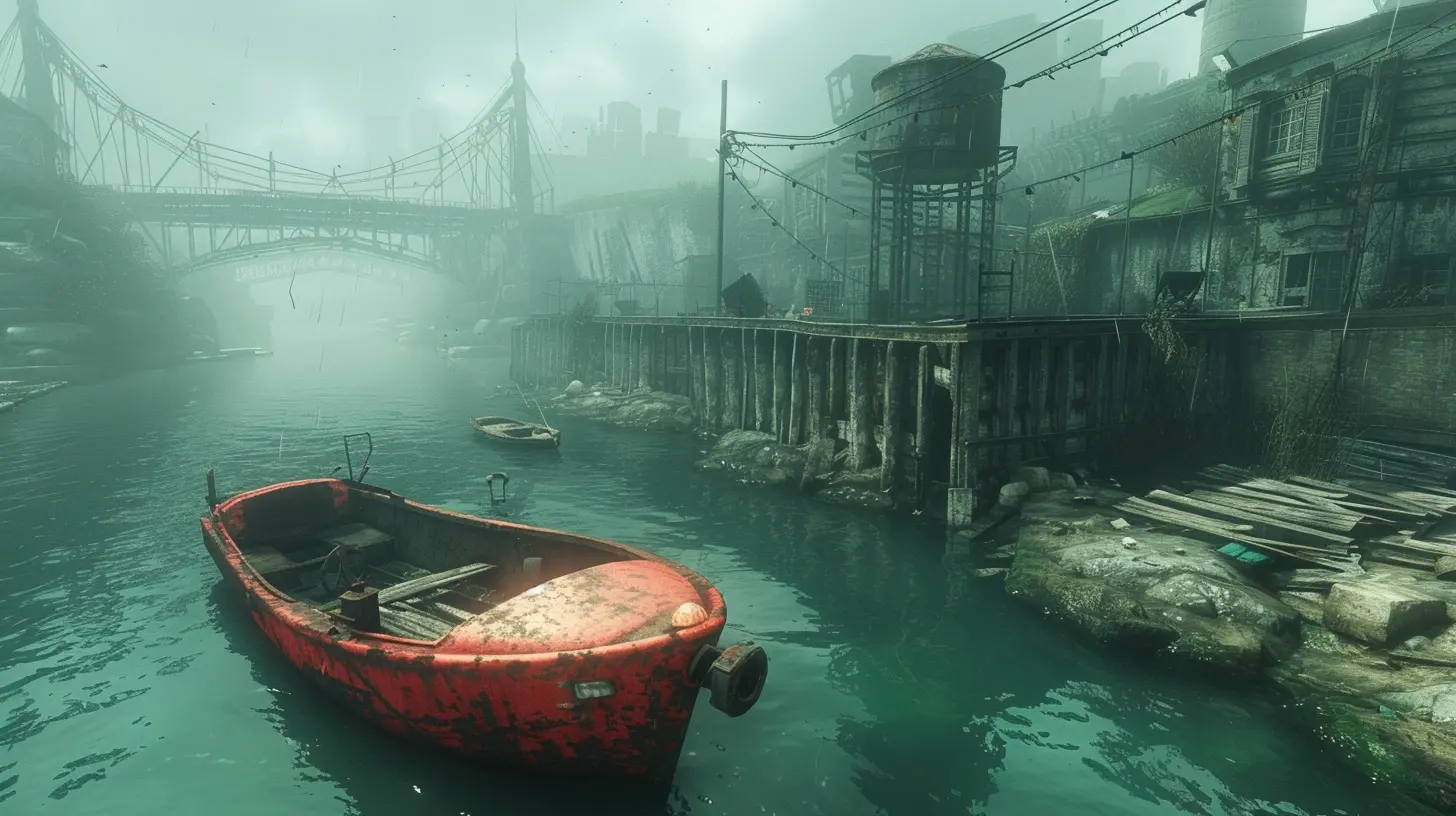Integrating Physics into Games: Making the Virtual World Feel Real
18 October 2025
When was the last time you played a game and thought, "Whoa, that explosion looked so real!" or "How come that sword swing felt so satisfying?" Believe it or not, the magic behind those epic in-game moments often comes down to one thing: physics. Yep, the same physics most of us tried to survive in high school. But in gaming, it’s far from boring. It’s the secret sauce that makes the virtual world believable, engaging, and, most importantly, fun. So, grab your favorite snack and let’s dive into the fascinating world of integrating physics into games! 
Why Physics in Games Is a Big Deal
Before we break it down, let’s get one thing straight: without physics, games wouldn’t feel... well, real. Imagine firing a rocket launcher and it just vanishes mid-air. Or jumping in a platformer and floating like a balloon. Pretty lame, right? Physics is the backbone of how objects and forces interact in games, making them behave like they would in real life—or at least close enough to it.But here’s the kicker: physics in games isn't about being perfectly accurate. It’s about believable accuracy. Developers tweak and bend the rules of physics to prioritize fun over realism. After all, you’re not playing a game to relive your middle school science class. 
Key Elements of Physics in Games
So, what makes good physics in a game? Let’s break it into bite-sized pieces:1. Collision Detection
Ever tried walking through a wall in a game? Probably didn’t go well because of collision detection. This is what keeps objects from passing through each other. It's why your character can land on the floor instead of falling endlessly into the pixel void below.But it’s not just about keeping everything in its place. Collision detection also makes interactions possible, like when a car hits a wall in a racing game, and you see the crunch of metal and shattered glass. Without this, we’d never feel the impact of our actions (literally).
2. Ragdoll Physics and Animation
You know those dramatic, floppy falls when a character gets hit? That’s ragdoll physics at work. Instead of pre-programmed animations for something like a punch or explosion, ragdoll physics calculates how the character’s body would naturally react based on the forces involved.It’s hilarious, chaotic, and oddly satisfying. Games like Grand Theft Auto V and The Elder Scrolls V: Skyrim take full advantage of this to amp up the immersion—and the meme potential.
3. Gravity and Momentum
Nothing screams “immersion” like gravity pulling you down after a jump. But it's not just about pulling things to the ground; gravity influences EVERYTHING in a game. The way objects fall, roll, or even stay still ties back to a game’s physics engine.Momentum is another biggie. You feel it when you swing a sword, throw a grenade, or drift around a corner in a racing sim. When done right, it creates that satisfying, “I totally nailed that” feeling. 
Physics Engines: The Unsung Heroes
You might be wondering, “How do developers even pull this off?” That’s where physics engines come in. These are tools that handle all the complex calculations so developers don’t have to manually code how, say, a tree falls in a storm.Popular Physics Engines
- Havok: Used in blockbuster games like Halo and Assassin’s Creed.- Unity’s Built-in Engine: Great for indie developers working on smaller projects.
- CryEngine: Known for its jaw-dropping realism in games like Crysis.
- PhysX by NVIDIA: Perfect for mind-blowing effects like destructible environments.
The choice of engine can make or break a game’s feel. Some prioritize speed and simplicity, while others go all-in on hyper-realistic simulations. 
How Physics Enhances Gameplay
Okay, so physics makes things look cool, but how does it actually improve gameplay? Oh, let me count the ways.1. Immersion
Imagine playing a survival game where trees sway with the wind, rivers flow naturally, and your makeshift shelter actually crumbles when hit by a storm. Physics makes you feel there.2. Strategy and Problem Solving
Physics-driven puzzles are a gamer’s playground. Think of games like Portal or Half-Life 2. Using gravity, momentum, and other forces to solve challenges keeps things fresh and engaging.3. Chaos and Fun
Physics-driven chaos is pure gold. The unpredictability adds replay value. For example, the way enemies tumble in Just Cause 4 after an explosion never gets old. It’s a mix of hilarity and satisfaction that keeps players coming back.Challenges of Integrating Physics
Now, let’s not sugarcoat it—implementing physics into games isn’t always a walk in the park.- Performance Issues: Calculating real-time physics eats into your CPU power. If it’s too demanding, it can slow the game down.
- Unrealistic Results: Sometimes the physics engine acts wonky. Ever seen a car fly into space for no reason? Yeah, that’s awkward physics.
- Balance Between Fun and Realism: Like we said earlier, it’s not about being perfect. Developers have to find that sweet spot where gameplay feels believable yet still enjoyable.
What the Future Holds
If you think physics in games is cool now, just wait. As technology advances, we’re seeing even crazier possibilities. Real-time ray tracing and AI-driven physics simulations are already starting to push the envelope. Imagine a game where every leaf on a tree reacts individually to the wind or where water flows so naturally you’d swear it was real.Virtual reality (VR) is another exciting frontier. Realistic physics is crucial in VR to make you feel connected to the virtual world. Interacting with objects in VR that behave like their real-world counterparts? Chef’s kiss.
And who knows? Maybe one day, gaming physics will be so advanced that it’ll rival real-world physics (cue a mind-blown emoji here).
Final Thoughts
Physics in games might be working behind the scenes, but its impact is front and center. It’s the reason we’re able to feel the weight of a sword, the thrill of a car chase, or the rush of an explosion. Without it, games would feel hollow, like something was missing.So, next time you’re playing your favorite game, take a moment to appreciate how well things fall, crash, or bounce. Chances are, there’s a brilliant physics engine (and a hardworking dev team) making it all happen.
all images in this post were generated using AI tools
Category:
Game DevelopmentAuthor:

Avril McDowney
Discussion
rate this article
1 comments
Eliza Whitley
This article beautifully captures the essence of how physics enhances our gaming experiences. The way these principles create immersive and believable worlds is nothing short of magical. Thank you for shedding light on this vital aspect of game design; it truly elevates our connection to virtual adventures.
October 20, 2025 at 3:37 PM

Avril McDowney
Thank you for your kind words! I'm glad you found the article insightful and that it resonated with your appreciation for the role of physics in gaming.


